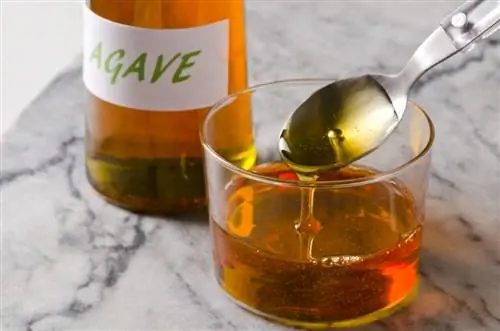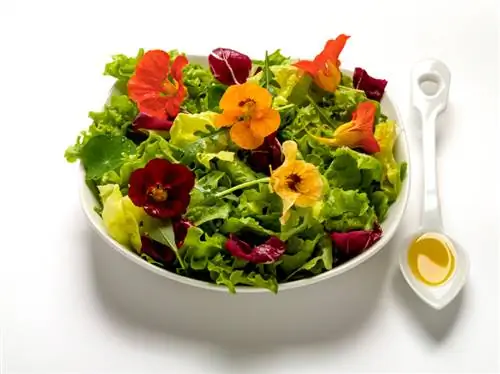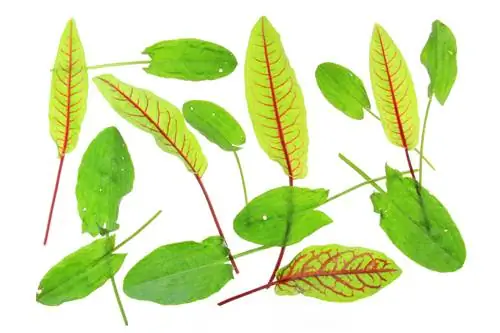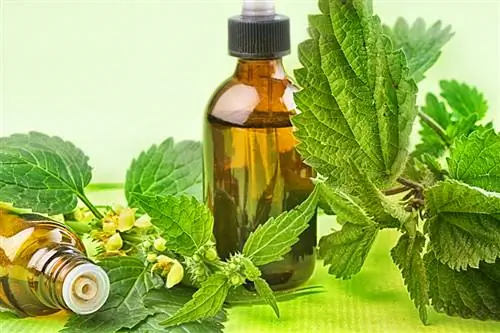- Author admin [email protected].
- Public 2023-12-16 16:46.
- Last modified 2025-06-01 06:02.
Poisonous or not? Edible or not? Hobby gardeners in this country disagree about the edibility of agaves. On the one hand, the succulent plant contains proven toxic substances, but on the other hand, it has been cultivated for nutritional purposes in South America for thousands of years. Now what's right?
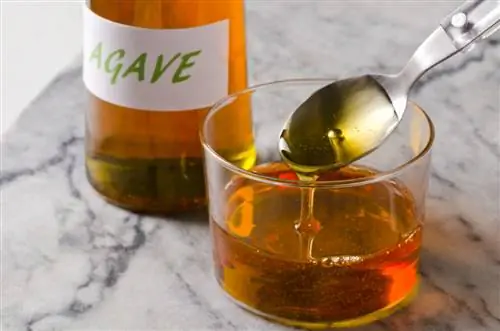
Can you eat agave?
Agave plants are partly edible, especially the sugary sap that is used to make agave syrup, tequila and mescal. However, when consumed raw, agave can be harmful as it contains toxic oxalate crystals that can cause irritation.
Can you eat agave?
Humans have been harvesting and using agave plants for around 9,000 years. The plant made up a large part of the diet of the South American natives and was also used for other purposes. The main use is the high sugar content, which is used to make agave syrup and alcoholic drinks such as tequila and mescal. In addition, agave nectar is also used in Mexico as a medicinal substance to treat skin irritations, insect bites, open wounds and menstrual problems. Leaves and flowers of some species can also be prepared and eaten.
Which parts of the agave are poisonous?
In fact, agaves, with their sharp spines and slightly poisonous plant sap, which can cause a range of symptoms from swelling to blistering, also pose a danger to people and pets. The plant is considered slightly poisonous because the oxalate crystals in its leaves can cause extreme irritation. The needle-shaped crystals can irritate the mouth and throat of sensitive people or pets to such an extent that swelling and difficulty breathing can occur. The saponins and essential oils also contained can cause skin irritation or dermatitis.
Which types of agave are edible?
These ingredients are also the reason why you can use agave - including agave juice! - should never eat raw - the result would be swelling of the mucous membranes, breathing difficulties and dermatitis. In addition, not all types of agave are edible: blue agave (Agave tequilana) is primarily grown and used, but other types are also used. However, many other agaves are grown to make textiles and other inedible products from their plant fibers. Avoid agave lechuguilla. It is known to be poisonous.
Why is agave syrup problematic?
Agave syrup is considered by many to be a he althy alternative to sugar or honey, as it is said to contain many minerals and vitamins. Unfortunately, this is wrong, because a large part of the he althy ingredients are lost during the manufacturing process - in which the agave juice is boiled down to a syrup. Basically it's just sugar, which is also one and a half times sweeter than normal table sugar. Furthermore, rainforests are cut down and huge monocultures are planted to grow agave - just for a sugary sweetener.
Tip
Risk of confusion with Aloe Vera
Many poisonings with agave are caused by confusion with the very similar aloe vera - which you shouldn't eat either. You can recognize aloe vera by its thicker, fleshier leaves that are filled with a gel-like substance. The inside of agave leaves, on the other hand, is very fibrous.

